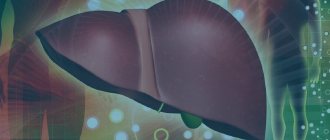Acute cystitis - symptoms and treatment
Treatment algorithm for acute cystitis:
- drink plenty of fluids at least 1.5 liters of fluid per day;
- exclude sexual contact for the entire period of the disease;
- antibacterial therapy.
If cystitis is recurrent, then the antibiotic is selected based on the results of urine culture.
Antibacterial drugs:
- Fosfomycin is a broad-spectrum antibiotic that shows high activity against most bacteria: Pseudomonas aеruginosa, Escherichia coli, Proteus mirabilis, Klebsiella pneumoniae, Staphylococcus spp. (including Staphylococcus aureus, Staphylococcus epidermidis), Streptococcus spp. (including Enterococcus faecalis) [11].
- An alternative to fosfomycin are drugs from the nitrofuran group (Nitrofurantoin, furazidine potassium salt). The drugs are effective against Escherichia coli, Klebsiella pneumoniae and other bacteria, as well as fungi of the genus Candida. Resistance to nitrofurans rarely develops.
- Less often they resort to prescribing systemic oral antibacterial drugs, such as cefixime, a third-generation cephalosporin antibiotic. Antibiotics of the fluoroquinolone group (levofloxacin, norfloxacin, ciprofloxacin, etc.) and cephalosporins (cefixime, cefuroxime, etc.) are associated with a large number of adverse reactions and can lead to the development of resistant bacterial forms, and therefore should not be the first line of treatment for acute uncomplicated cystitis [12] [19].
Etiological treatment (aimed at eliminating the cause and conditions for the development of the disease)
In case of relapses of acute cystitis, bacteriophage preparations have recently been increasingly used - drugs based on viruses that selectively destroy bacteria, like sniper fire. Most often, bacteriophages multiply inside bacteria and cause them to disintegrate into fragments.
Treatment with bacteriophages is safer than with antibiotics, but it should be taken into account that targeted destruction of bacteria requires bacteriological examination of urine to determine the pathogen and its sensitivity to phages [2].
In patients with recurrent cystitis, which is directly related to sexual intercourse (postcoital cystitis) and in the presence of a deeply located external urethral opening, surgical treatment is used. An operation aimed at moving (transposing) the urethra has a high success rate.
Pathogenetic treatment (aimed at eliminating or suppressing the mechanisms of disease development)
Uro-Vaxom vaccine , taken orally (by swallowing). The product has an immunobiological property that protects against the effects of E. coli and triggers a nonspecific immune response (activates macrophages and cellular phagocytosis). When prescribing a vaccine, it should be taken into account that the effectiveness remains with a repeated course of taking the drug [4].
D-mannose is a monosaccharide that, after absorption from the intestine with urine, enters the bladder, where it blocks the attachment of bacterial pili (thread-like outgrowths of bacteria). As a result, bacteria leave the body along with urine. D-mannose is a dietary supplement, not a medicine, but this drug has proven effectiveness and is recommended by the European Association of Urology [17].
Hormone replacement therapy. In postmenopausal women, estrogen levels sharply decrease. Estrogens are one of the factors protecting the bladder mucosa; when they decrease, the protective mechanisms of the mucosa are weakened. It is possible to administer hormonal drugs containing estrogens through the urethra or vagina.
that have anti-inflammatory, weak diuretic and antiseptic effects are used as auxiliary agents Among herbal remedies, “Canephron” is effective - a complex preparation of plant origin, which includes centaury herb, lovage root and rosemary leaves. The drug has diuretic, anti-inflammatory, antispasmodic, antimicrobial, vasodilator and nephroprotective effects [1].
In case of severe hematuria, hemostatic drugs may be prescribed. The most effective in this group are antifibrinolytic drugs - aminocaproic and tranexamic acids [11].
If the cause of acute cystitis is obstructive uropathy (difficulty passing urine associated with a narrowing of the lumen of the urethra), then after stopping the acute period and eliminating the infectious agent, surgical correction is performed - installation of a cystostomy (special drainage tube), urethroplasty, etc.
Symptomatic treatment (reducing the manifestations of the disease)
NSAIDs (non-steroidal anti-inflammatory drugs) are a large group of drugs that have analgesic, antipyretic and anti-inflammatory effects, reduce pain, fever and inflammation. The most well-known representatives of NSAIDs: aspirin, paracetamol, ibuprofen, diclofenac.
More modern drugs from the NSAID group, which have the same positive properties and have much fewer side effects: nimesulide, meloxicam, Celebrex [10].
Phenazopyridine - this drug, entering the bladder with urine, acts on the mucous membrane of the lower urinary tract, exerting a local effect. This helps reduce pain over the pubis, burning and reduce the frequency of urination. The effect appears quickly, in a matter of hours.
If you are ill, you must follow a diet excluding spicy foods. It is advisable to eat foods that are rich in vitamins and increase daily diuresis (for example, cranberries), as well as a sufficient amount of fluid to maintain daily urine output in a volume of 2000-2500 ml [1].
Services and diseases
Cystitis is an infectious and inflammatory disease of the bladder wall with primary damage to its mucous membrane.
Epidemiology. Women get sick more often than men, in a ratio of 3:1, which is due to:
- anatomical and physiological features of the female genitourinary system (short and wide urethra, proximity of the genital tract and rectum)
- gynecological diseases
- changes in hormonal levels during pregnancy, when taking hormonal contraceptives, in the postmenopausal period (microcirculation disorders leading to weakening of local immunity, atrophy of the vaginal mucosa, decreased mucus formation)
Cystitis is an infectious and inflammatory disease of the bladder wall with primary damage to its mucous membrane.
Epidemiology. Women get sick more often than men, in a ratio of 3:1, which is due to:
- anatomical and physiological features of the female genitourinary system (short and wide urethra, proximity of the genital tract and rectum)
- gynecological diseases
- changes in hormonal levels during pregnancy, when taking hormonal contraceptives, in the postmenopausal period (microcirculation disorders leading to weakening of local immunity, atrophy of the vaginal mucosa, decreased mucus formation)
In men, this disease is much less common and can be caused by inflammatory processes in the prostate gland, seminal vesicles, epididymis and urethra. A common cause of secondary cystitis in men is bladder outlet obstruction with chronic urinary retention as a result of urethral strictures and tumor diseases of the prostate gland.
Etiology and pathogenesis. The most common cause of cystitis is a bacterial infection. In addition, the causative agents of the disease can be viruses, mycoplasmas, chlamydia, and fungi. Most often, in patients with cystitis, Escherichia coli, Staphylococcus, Enterobacter, Proteus, Pseudomonas aeruginosa, and Klebsiella are detected in the urine. The leading microbial pathogen in acute cystitis is Escherichia coli (80–90% of observations), which is explained by the high pathogenic and adaptive capabilities of this microorganism (adhesion phenomenon, high reproduction rate, production of ammonia, which weakens the immune system and disrupts the function of smooth muscle fibers of the urinary tract).
Symptoms and clinical course. Acute cystitis is characterized by a sudden, violent onset caused by some provoking factor (hypothermia, endoscopic intervention, trauma), and rapid regression in the case of timely prescribed therapy. The severity of symptoms increases during the first two days.
Patients complain of frequent painful urination, pain in the lower abdomen and the appearance of blood at the end of urination (terminal hematuria). The inflammatory reaction and swelling of the bladder wall are accompanied by irritation of the nerve endings. Even a slight accumulation of urine causes the muscular wall of the bladder to contract, and the patient feels a very strong urge to urinate. The more pronounced the pathological process, the shorter the intervals between urinations. In severe cases, this time period is reduced to 15–20 minutes, which is extremely exhausting for the patient. Urgent urinary incontinence is characteristic, that is, the imperative (imperative) urge to urinate is so strong that the patient loses urine before reaching the toilet.
Cystitis is accompanied by pain in the bladder and perineum area of varying degrees of intensity. The pain syndrome is characterized by constancy, which disrupts a person’s usual life activities and rest, since it does not stop at night.
Terminal hematuria is also a very characteristic sign of the disease. It appears at the end of urination in the form of a clearly visible impurity or even drops of blood. Urine with cystitis loses transparency due to the presence of a large number of microorganisms, blood cells, epithelial cells and salts. It becomes cloudy and acquires an unpleasant odor.
There is no increase in temperature during cystitis, which is due to the reduced ability of the bladder wall to absorb substances, including inflammatory toxins. Normally, this mechanism prevents the products of nitrogen metabolism from concentrated urine from entering the blood.
Severe forms of acute cystitis – phlegmonous, gangrenous, hemorrhagic, ulcerative – occur extremely rarely. They are characterized by severe intoxication, high body temperature, and oliguria.
A recurrent course of acute cystitis is said to occur when symptoms of the disease appear at least twice in six months or three times in a year. The cause of cystitis in this case is reinfection, that is, repeated infection with pathogenic microflora, the source of which is both a nearby focus of chronic infection and a sexual partner. Also, the risk of relapse is increased by interrupted treatment, uncontrolled use of antibiotics and failure to comply with personal hygiene rules.
Chronic cystitis , as a rule, is a consequence of a previous inflammatory or predisposing disease and is secondary in nature. Inflammation of the bladder develops and is maintained as a result of:
- bladder outlet obstruction (sclerotic changes in the bladder neck, benign hyperplasia, prostate cancer, narrowing of the urethra, phimosis)
- UCD (bladder stones)
- bladder tumors
- bladder diverticula
In the absence of the above pathological conditions and chronic cystitis resistant to therapy, it is necessary to exclude specific diseases, primarily genitourinary tuberculosis.
The clinical symptoms of chronic cystitis repeat those of the acute form. The difference lies only in the degree of their expression. The course of the disease is characterized by periodic exacerbations, which are clinically very similar to acute cystitis and are treated in the same way. A stable course of chronic cystitis with a minimal set of complaints and constant laboratory signs, such as leukocyturia and bacteriuria, is also possible.
Diagnostics. The rapid onset of the disease with characteristic symptoms allows one to immediately suspect acute cystitis. As a rule, no pathological changes are observed in clinical and biochemical blood tests.
Urine is cloudy and has an odor. When examined, its reaction is often alkaline, a large number of leukocytes and bacteria are always determined, red blood cells, epithelium, cylinders may be present, and false proteinuria is noted, that is, caused by the breakdown of a large number of blood cells.
Bacterioscopy allows you to visually (using a microscope) determine the presence of an infectious pathogen. Urine culture with determination of bacterial culture and antibiotic sensitivity test is more informative. The disadvantage of this method is the duration of its implementation, therefore, with a clinically confirmed diagnosis of cystitis, antibacterial therapy with broad-spectrum drugs is started without waiting for culture results.
It is important to note that in acute cystitis, invasive diagnostic methods, primarily cystoscopy, are contraindicated.
Firstly, this procedure does not provide significant information, secondly, in the presence of acute inflammation it is extremely painful and, thirdly, it can lead to reinfection and/or aggravate the course of the infectious process. Cystoscopy is possible and indicated for chronic cystitis; it can be used to identify areas of hyperemia, pronounced vascular patterns, fibrinous deposits, ulcers, leukoplakia, stones, etc.
Differential diagnosis. In acute cystitis, the diagnosis is usually beyond doubt. Chronic cystitis, especially in cases where there are no characteristic clinical symptoms and treatment is ineffective, should be differentiated primarily from tuberculosis and bladder tumors.
Distinctive signs of tuberculous cystitis are the acidic reaction of urine and the absence of microbial growth when inoculated on ordinary media. Repeated microscopy of urine sediment for Mycobacterium tuberculosis and its inoculation on special media are necessary. The most characteristic sign of bladder tumors is total painless gross hematuria. The diagnosis can be made by sonography, CT and cystoscopy with a biopsy of the bladder wall.
Treatment. Therapeutic tactics for acute cystitis include prescribing antibacterial therapy; rest, plenty of fluids, and warmth in the lower abdomen are recommended; spicy and extractive foods are excluded from the diet. Currently, there are a number of effective antibiotic treatment depending on the duration of use: a single dose, three-day and seven-day courses. The clinical effectiveness of short-term courses of treatment for women of reproductive age has been proven.
The best single-use drug is fosfomycin (monural). This is a broad-spectrum antibiotic, effective against Escherichia coli, Staphylococcus, Proteus, Pseudomonas aeruginosa, Klebsiella, etc. The resistance of microflora to this drug is insignificant. In the treatment of uncomplicated cystitis, a single dose of 3 g of fosfomycin is indicated, the effect of which lasts for 5 days. Its use is justified for bacteriuria in pregnant women, as well as as a prophylaxis before invasive studies (cystoscopy) and surgical interventions. A single dose of levofloxacin at a dose of 250 mg also has a good effect; cure after it reached 95% of patients.
A longer course of antibiotic therapy is indicated for the treatment of cystitis in patients with risk factors for recurrent and chronic infection. These include:
- acute cystitis in men
- cystitis in women over 65 years of age
- persistence of clinical symptoms for more than 7 days
- pregnancy
- diabetes mellitus and other metabolic disorders
- use of diaphragms and spermicides
For these patients, it is most appropriate to prescribe fluoroquinolones, 3rd and 4th generation cephalosporins and protected penicillins.
From the point of view of the combination of such qualities of drugs as effectiveness, low cost and low probability of relapse, fluoroquinolones are currently the drugs of choice. Having a wide spectrum of action and having been present on the pharmacological market for quite a long time, they are still characterized by the lowest level of microflora resistance. From this group, ciprofloxacin, levofloxacin, norfloxacin and ofloxacin are usually prescribed. A standard seven-day course of these drugs allows you to completely relieve the symptoms of cystitis and eliminate the pathogen.
Cephalosporins have worked well in the treatment of urinary tract infections. They are highly effective against almost all gram-negative (Proteus, Klebsiella, Enterobacter) bacteria, including nosocomial strains resistant to many antibiotics, and many gram-positive (staphylococci, streptococci) microorganisms.
Semi-synthetic penicillins (Augmentin, Amoxiclav) contain clavulanic acid, which neutralizes the enzymatic defense of gram-positive bacteria.
In addition to antibiotics, the positive effect of uroantiseptics . Representatives of this group are nitrofurantoin (furadonin) and furazidin (furagin).
Symptomatic therapy. Pain can be relieved by prescribing nonsteroidal anti-inflammatory drugs that have anti-inflammatory and analgesic effects (solpadeine, diclofenac, lornoxicam, etc.). Antispasmodics include no-spa, baralgin, cystenal, platifillin, etc.
The criteria for cure of cystitis are the complete absence of clinical symptoms, the absence of leukocyturia and the growth of bacterial colonies in urine culture after the end of antibacterial therapy. You should take a control general analysis and urine culture for microflora at least a week after stopping antibiotics.
Treatment of chronic cystitis is more complex and lengthy. Therapy consists of taking antibiotics for 7–14 days, and sometimes several weeks. It is especially important to eliminate the cause of the chronic infectious-inflammatory process, to sanitize foci of chronic infection and correct the immunodeficiency state.
In the prevention of cystitis, compliance with the rules of personal hygiene, timely treatment of inflammatory diseases and urodynamic disorders, prevention of hypothermia, and adherence to asepsis during endovesical examinations and bladder catheterization play an important role.
Cystitis in men
Features of cystitis in men
Men suffer from cystitis much less often than women. After all, the urethra in men is long and narrow.
IMPORTANT! Information from the article cannot be used for self-diagnosis and self-medication! Only a doctor can prescribe the necessary examinations, establish a diagnosis and draw up a treatment plan during a consultation!
The cause of cystitis in men is often problems with the prostate gland (inflammation, tumors), sexually transmitted infections, narrowing (stricture) of the urethra, kidney disease (kidney stones, pyelonephritis). Therefore, it is believed that cystitis is a more serious disease for men than for women. The disease is more severe and requires a mandatory visit to a urologist. The causative agents of infectious cystitis are most often bacteria, less commonly viruses and fungi.
Symptoms of bladder inflammation
Symptoms of cystitis in men go along with symptoms of urethritis:
- increased frequency of urination up to several times per hour;
- urine discharge in small portions, feeling that the urine has not come out completely;
- cramps and pain when urinating in the groin and penis;
- difficulty urinating, it is difficult for a man to start urinating;
- change in color, cloudiness of urine (sometimes urine with blood or pus appears);
- aching pain in the lower abdomen, sometimes pain can radiate to the rectal area, pain in the lower back is possible;
- possible rise in body temperature, chills, weakness.
If clots or streaks of blood appear in the urine, or the urine turns dark red, you should immediately consult a urologist. This is a very serious symptom.
Causes of cystitis
The appearance of cystitis in men is provoked by:
- penetration of infection from the kidneys (descending) or from the urethra (ascending);
- incomplete emptying of the bladder (due to an enlarged prostate or narrowing of the urethra);
- recent urological manipulations (bladder catheterization);
- frequent changes of sexual partner (increases the risk of getting gonorrhea, chlamydia and other sexually transmitted diseases, which, in turn, increases the risk of cystitis);
- decreased immunity, especially in older people or people with diabetes.
Acute, chronic, hemorrhagic cystitis
Chronic cystitis in men occurs when acute cystitis is insufficiently or incorrectly treated. If, during the first illness, the provoking factor is not removed and the infection in the bladder is not eliminated, the process will go deeper. The symptoms of chronic cystitis are similar to those of the acute form of the disease, but less pronounced. Chronic cystitis worsens two or more times a year. A man with chronic cystitis must undergo a comprehensive examination by a urologist in order not to miss more serious diseases, such as cancer.
Hemorrhagic cystitis is an inflammation of the mucous membrane of the bladder, which is accompanied by the release of blood in the urine. In men, hemorrhagic cystitis occurs quite often, especially in those who suffer from prostate adenoma. Urine with such cystitis becomes dark red. A change in urine color to dark red is a reason to urgently go to the doctor. If hemorrhagic cystitis is left untreated for a long time, iron deficiency anemia develops, as red blood cells and hemoglobin are lost in the urine.
Treatment of cystitis
If a man gets cystitis, this requires special attention from both the patient and the doctor. Most likely, comprehensive treatment of the entire genitourinary system will be required. First of all, you need to consult a urologist who will conduct a survey and examination. After the examination, the specialist will prescribe the necessary tests and studies (urinalysis and ultrasound examination of the urinary system are mandatory). Based on the data obtained, the urologist will make a diagnosis, identify the cause and provoking factor in each specific case.
It should be noted that antibiotics are most often prescribed for the treatment of cystitis. These medications must be taken exactly as prescribed by your doctor. It is important not to interrupt the course of treatment, even if the symptoms of the disease have disappeared and you feel well. Often, with cystitis in men, painkillers and drugs that relieve inflammation are prescribed to alleviate the condition. That is, already at the beginning of treatment it will become easier.
Important advice: during treatment of cystitis it is better to abstain from sexual activity.
With cystitis, men are recommended to eat more plant foods rich in vitamins. Fatty, spicy, fried foods should be excluded. A urologist will recommend drinking a lot or a little, as this is individual in each case.
About the clinic
Euromed Clinic is a multidisciplinary family clinic in the center of St. Petersburg.
- Calling a doctor to your home
- 24/7 therapist appointment
- Tests, ultrasound, x-ray
- Whole body diagnostics
- Hospital and surgery
- Vaccination
Find out more about the clinic
Blog
A lot has been said and written about cystitis. But few people talk about the connection between cystitis and gynecological diseases - colpitis, candidiasis, sexually transmitted infections, etc. This article draws connections between these issues.
Cystitis is the most common urological disease among women. To one degree or another, signs of cystitis are observed at least once in a lifetime in more than half of women. For some, cystitis becomes an annoying nuisance, for others it turns life into hell, which, unfortunately, is not uncommon. We can safely say that cystitis is not “lucky”: this disease is at the intersection of two specialties - urology and gynecology. Inflammation of the bladder itself is a urological problem, and the reason that in most cases leads to the development of cystitis - a violation of the vaginal microflora - is a gynecological problem. It turns out that with a competent approach, a woman with cystitis should be treated by two doctors at once - a urologist and a gynecologist. But life shows that most often the problem of cystitis is dealt with by a gynecologist.
WHAT IS CYSTITIS?
Cystitis is an inflammation of the mucous membrane of the bladder. There are toxic, allergic, non-infectious cystitis - all these are rare and we will not talk about them. In the vast majority of cases, cystitis is caused by one or another infection. Most often this is one of the representatives of opportunistic flora - E. coli, staphylococci, streptococci, etc. Often there are cystitis directly associated with sexually transmitted infections, for example: ureaplasma, mycoplasma, chlamydia, gonorrhea. The infection enters the woman's bladder from the urethra. In women, it is short, wide, and it is very easy for bacteria to get through it. Bacteria most often enter the urethra from the vagina. Cystitis is almost always associated with inflammation of the vagina - colpitis, or a disturbance of the vaginal microflora - bacterial vaginosis. Traditionally, exacerbations of cystitis are associated with hypothermia. Yes, indeed, hypothermia causes a decrease in the body's resistance, especially the local immune response, as a result of which the infection actively multiplies and enters the bladder, causing an inflammatory reaction - cystitis. However, practice shows that cystitis is more often associated with particularly violent sexual intercourse. Sometimes exacerbations of cystitis are associated with the menstrual cycle.
“HONEYMOON” CYSTITIS
This beautiful term implies the development of signs of cystitis after defloration, that is, deprivation of virginity. The following happens. Even before a girl begins sexual activity, she may have disturbances in the vaginal microflora. This happens all the time; thrush in girls is so common that it is considered almost the norm. The first sexual intercourse is not always violent, but it is still accompanied by an abundant flow of vaginal microflora into the urethra and bladder. Their walls are not prepared for such an attack, and an inflammatory reaction develops, that is, cystitis. It’s rare that someone gives up sex on their honeymoon, even despite illness. Therefore, cystitis progresses and progresses...
SYMPTOMS OF CYSTITIS
Cystitis is manifested primarily by increased urination. At the same time, the woman constantly has a strong urge to visit the toilet, which does not correspond to the amount of urine released. Often a woman notices pain at the end of urination, sometimes blood appears in the urine. With acute cystitis, the temperature rises and pain appears in the lower abdomen. If the so-called cervical form of cystitis develops, in which the bladder sphincter is involved in the inflammatory process, then episodes of urinary incontinence are observed. Cystitis should not be confused with urethritis - inflammation of the urethra. Urethritis is manifested by unpleasant sensations, pain, burning or stinging when urinating - and nothing more. Cystitis and urethritis often accompany each other, but this is not always the case.
WHAT DO MANY WOMEN DO?
Most often, at the first symptoms of cystitis, on the advice of more “experienced” friends, the girl takes several tablets of the first antibiotic she comes across, the symptoms of the disease subside and they forget about it until the next exacerbation. This can go on for years. Unfortunately, some doctors do no better in this situation. The urologist at the district clinic will do a general urine test, after which he will prescribe some kind of uroseptic. A few days pass, the symptoms of cystitis decrease, and everything is fine. Nobody thinks about why cystitis worsened and how to prevent it. However, exacerbations of cystitis occur again and again. A woman is forced to wrap herself in warm clothes even in the heat, always think about what she can eat and what she cannot, and fear every intimacy with her loved one. This state of affairs can drive you crazy...
CAUSES OF CYSTITIS:
As already noted, in the vast majority of cases, the development of cystitis is associated with an infection in the vagina. Normally, a woman’s vagina is inhabited by microflora. It is based on the so-called lactobacilli, or Dederlein bacilli; there are also a small number of bifidobacteria and some other microorganisms. All these microbes are in ecological balance, their numbers are strictly controlled by each other, and they do not allow any other microorganism to appear in the vagina. Under the influence of various factors, this balance may be disrupted. These factors are varied - from stress and hypothermia to hormonal changes, pregnancy or withdrawal of oral contraceptives. An imbalance occurs when colonies of some microorganisms grow in large quantities and suppress all others. These may be fungi of the genus Candida, and the resulting disease will be called vaginal candidiasis, or simply “thrush”. It could be gardnerella - then the disease will be called gardnerellosis (bacterial vaginosis). It could be some kind of sexually transmitted infection - ureaplasmosis, trichomoniasis, chlamydia. These can be almost any microorganisms that have pathogenic activity. Vaginal dysbiosis is often accompanied by intestinal dysbiosis. Manifestations of bacterial vaginosis And so, a violation of the vaginal microflora has occurred. Classic symptoms for this disease are burning and itching in the genitals, copious mucous discharge, sometimes with an unpleasant odor, dryness and discomfort during sexual intercourse. These symptoms can be expressed to varying degrees, from very strong to subtle. In addition, bacterial vaginosis is a chronic disease and occurs with periods of exacerbations and remissions. If a microflora disorder was previously noted, then exacerbations occur periodically. From bacterial vaginosis there is only one step left to vaginitis, or colpitis - inflammation of the vagina. With this disease, the discharge begins to be purulent in nature, pain and pain appear in the genitals, and sometimes the body temperature rises. In the same way, one step remains to cervicitis - inflammation of the cervix (pain in the lower abdomen, painful sexual intercourse), urethritis - inflammation of the urethra (pain and burning when urinating). Very close to cystitis.
COMPLICATIONS OF CYSTITIS
Over a long period of time, the infection from the bladder enters the kidneys, which can lead to the development of pyelonephritis - inflammation of the kidney tissue. This is manifested by high fever and lower back pain on one side. Rarely, pyelonephritis is bilateral, and this situation is already life-threatening. Pyelonephritis, as a rule, is treated seriously, often in a hospital, with careful diagnosis and massive therapy. But even here, no one is engaged in the full treatment of cystitis and restoration of vaginal microflora. As a result, the disease will recur, and with each new attack of pyelonephritis, kidney function decreases. As a result, a woman may become disabled.
Now let's talk about the worst part. With some individual features of the structure of the bladder wall, the inflammatory process spreads to its entire thickness, affecting not only the mucous membrane, as with ordinary cystitis, but also the submucosal layer and the muscular wall of the bladder. This type of cystitis is called interstitial cystitis. Interstitial cystitis has several distinctive features. Such patients urinate frequently, up to 100-150 times a day. There may be pain in the lower abdomen, painful urination, and increased body temperature. Interstitial cystitis is practically untreatable. Sometimes antibiotics make things a little better, but more often they have no effect or cause the condition to worsen. With a long course of such cystitis, the muscle tissue of the bladder wall degenerates into rough scar tissue, the bladder loses its elasticity and decreases in volume. When the bladder volume reaches 50 ml, the only real treatment is surgery - complete removal of the bladder and its plastic from the area of the colon. Every woman who regularly notices exacerbations of cystitis and does not seriously treat it has a chance of developing interstitial cystitis.
CYSTITIS AND PREGNANCY
If a woman suffers from chronic cystitis, it is very likely that another exacerbation will occur during pregnancy. During pregnancy, the hormonal background of the body changes, the disturbance of the vaginal microflora most often worsens, the body's immunity decreases - all this creates conditions for the exacerbation of cystitis.
CYSTITIS AND SEXUAL INFECTIONS
Sexual infections include gonococcus, chlamydia, trichomonas, mycoplasma, ureaplasma, etc. All these pathogens can enter a woman’s vagina during sexual intercourse. Some time after entry, they cause inflammation of the vagina - colpitis, inflammation of the cervix - cervicitis, inflammation of the urethra - urethritis, which leads to disruption of the vaginal microflora - bacterial vaginosis. It often happens that the symptoms of the disease are so insignificant that the woman does not attach any importance to them, especially since after a few days they sometimes go away without treatment. Meanwhile, inflammation or disruption of the microflora becomes chronic, causing, among other things, a decrease in the body’s local immunity. By multiplying in the vagina, genital infections can themselves cause cystitis, but most often, against the background of a decrease in general and local immunity, nonspecific flora enters the bladder, causing exacerbation of cystitis. Therefore, direct or indirect, there is always a connection between sexually transmitted infections and cystitis. And competent treatment in this case should be carried out simultaneously with sexually transmitted infections and cystitis in one course, and at the same time treating the sexual partner.
CYSTITIS IN MEN
In men, cystitis does not occur often and almost always appears against the background of exacerbation of chronic prostatitis. More often, these symptoms are not too pronounced, and with treatment of inflammation of the prostate gland they go away on their own, without requiring additional measures. In other cases, a course of properly administered treatment for cystitis is usually effective. Only the problem of interstitial cystitis for men is almost the same as for women. In this case, surgical treatment is almost always necessary.
CYSTITIS IN CHILDREN
In children, for a number of reasons, cystitis develops quite often. The incidence of the disease is practically unrelated to either age or gender. In teenage girls, cystitis is more often associated with vaginal dysbiosis; in boys, cystitis often develops with phimosis (narrowing of the foreskin), but most often cystitis develops episodically, against the background of an accidental infection in the bladder. Fundamentally, the treatment of cystitis in children does not differ from the treatment of adults. Competent diagnosis necessarily includes a general analysis and urine culture, DNA tests for major infections, which make it possible to identify the pathogen and determine its properties. Cystitis in children very easily spreads to the kidneys, so it is better not to delay treatment, and cystitis must be taken very seriously.
TREATMENT OF CYSTITIS
For acute cystitis, treatment consists of prescribing special medications and bed rest. It is necessary to consume as much liquid as possible and exclude spicy and salty foods, seasonings, sauces, and canned food. Vegetables and fruits, dairy products are recommended.
When treating chronic cystitis, you should start by identifying the causes that led to inflammation. Treatment of cystitis in this case comes down to restoring urodynamics, eliminating foci of reinfection, and removing urinary stones. Antibacterial treatment is also carried out, but only after special examinations. In order to improve blood supply to the walls of the bladder, UHF, mud applications and inductothermy are prescribed.
The causes of cystitis are always individual, so self-medication and refusing to go to the doctor is very dangerous. The selection of medications for the treatment of cystitis should be carried out only by a doctor. Specialists of the diagnostic and treatment center “Dzhalin” LLC with a high degree of accuracy determine the causes of the development of cystitis and its causative agents, using the wide capabilities of modern diagnostic equipment, which is equipped in the urological office of our medical center. The high qualifications of our doctors allow us to exclude cases of medical error.
Urologist-andrologist Vladimir Safronov








